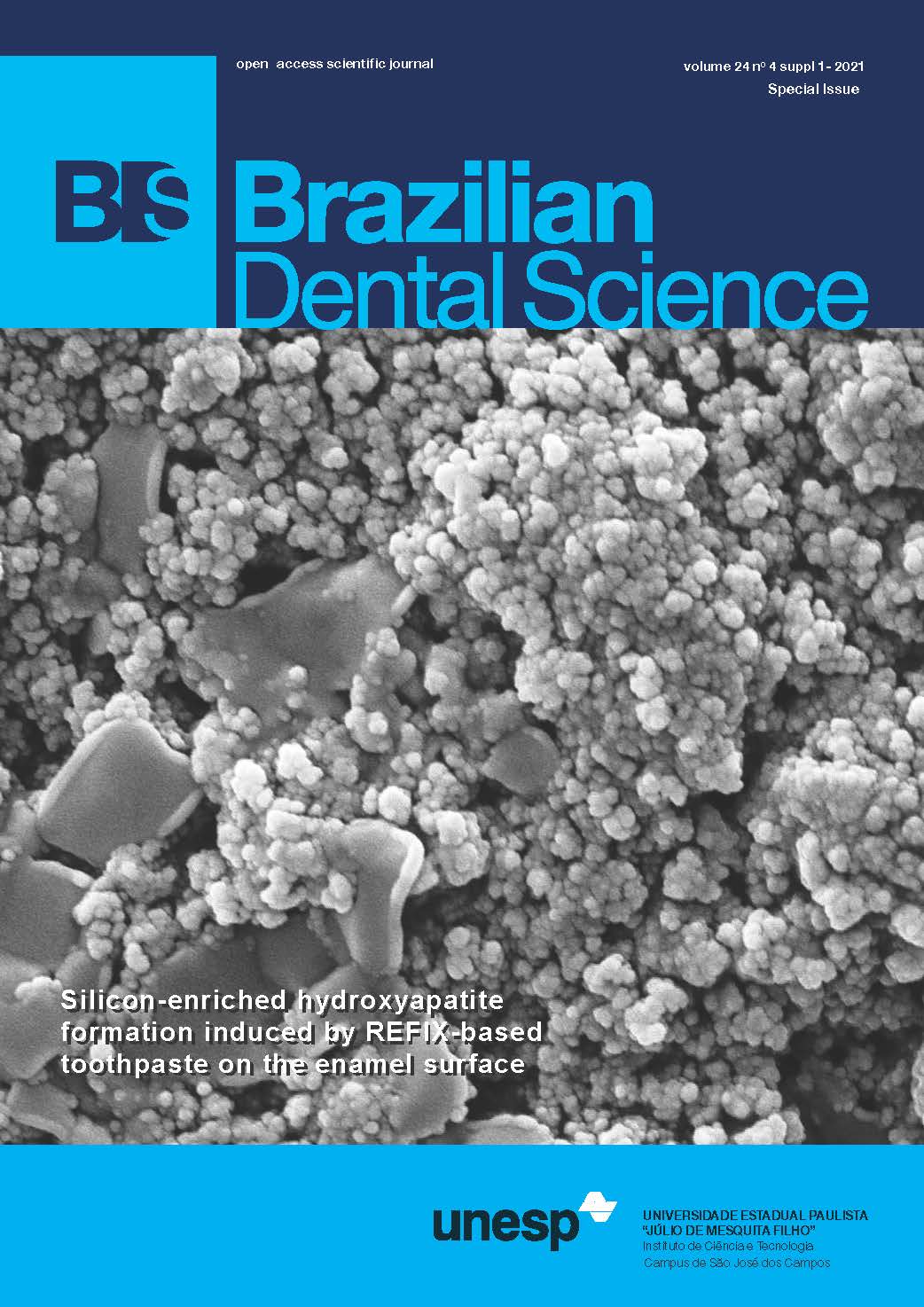The anti-osteoporotic effect of Moringa oleifera leaves extract on glucocorticoids-induced jawbone osteoporosis in Albino rats
DOI:
https://doi.org/10.4322/bds.2021.e2876Abstract
Objective: Glucocorticoids induced osteoporosis and its related fragility fractures represent a costly human
and socioeconomic load worldwide. All the current pharmacological therapies possess multiple adverse effects
and high cost. Thus, the pesent study aimed to evaluate the bone healing ability of Moringa oleifera (MO) on
glucocorticoids induced osteoporosis in the jawbone of Albino rats. Material and Methods: Osteoporosis was
prompted by a daily intraperitoneal injection of 200 micro g/ 100 g dexamethasone for 30 days. Next,the animals
were randomly divided into 2 groups; osteoporotic and MO treated group. The treated group receivd a daily
oral dose of 200mg/kg of MO. Rats from the MO group were sacrificed after 4 weeks from the beginning of
treatment, and the same sacrifice date was used for the osteoporotic group. Bone regeneration was evaluated by
dual energy x-ray absorptiometry (DEXA), real time polymerase chain reaction (RT-PCR), histopathological and
histomorphometric examination. Results: After the sacrifice, the DEXA analysis revealed a significant upregulation
in the BMD in the MO treated group (p <0.001). The RT-PCR test showed a significant decline in RANKL gene
expression and a significant rise in OPG gene expression in the MO group (p < 0.001, p = 0.002, respectively).
The histopathological examination of the MO group displayed a marked healing of the jawbone micro-anatomy.
The histomorphometric analysis also showed that the bone area percentage increased significantly in the MO
group (p <0.05). Conclusion: A cheap, easy to get, yet a powerful plant like MO leaves, can be cosidered an
effective treatment for osteoporosis.
KEYWORDS
Bone regeneration; Glucocorticoids; Moringa oleifera; Osteoporosis.
Downloads
Downloads
Published
Versions
- 2021-12-22 (2)
- 2021-12-17 (1)
How to Cite
Issue
Section
License
Brazilian Dental Science uses the Creative Commons (CC-BY 4.0) license, thus preserving the integrity of articles in an open access environment. The journal allows the author to retain publishing rights without restrictions.
=================




























